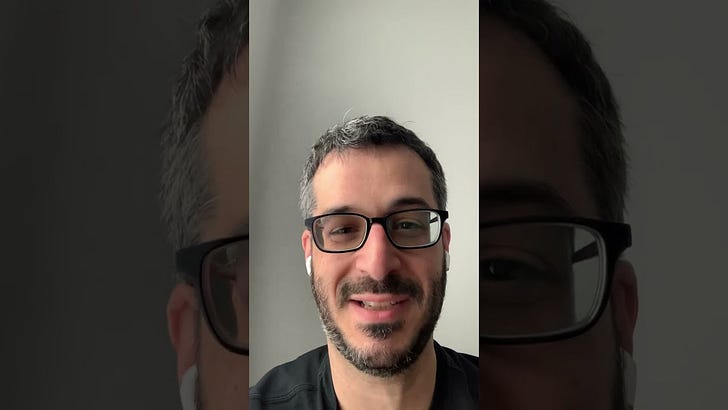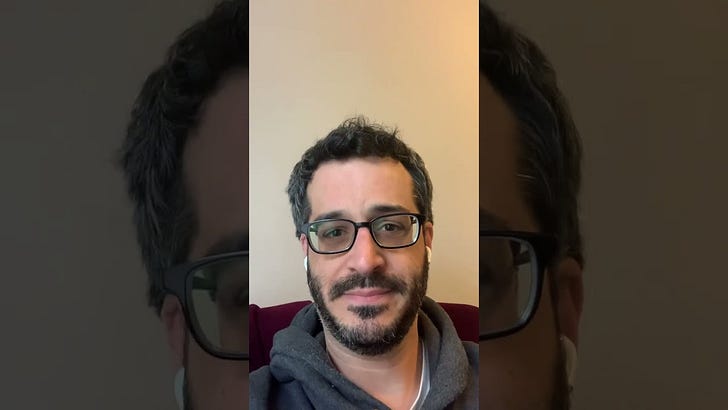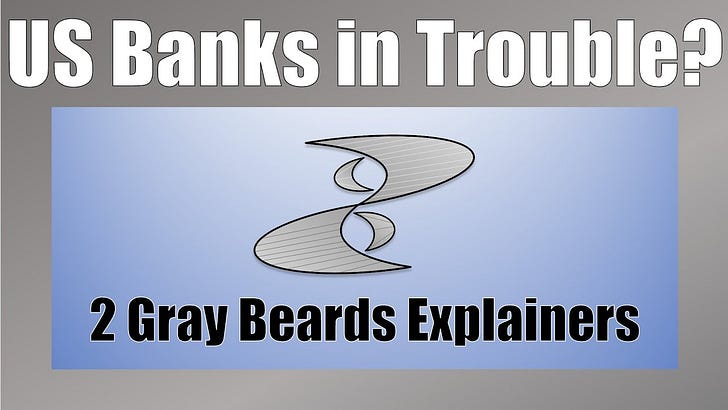People ask about my investment portfolio all the time.
Guess what?
It’s none of your damn business!
Just kidding. Although, it really is none of your business 😁
If you’re wondering about my views on how much crypto to hold and in what portion, this post is for you.
I don’t want to get into too much detail about my specific holdings and personal financial situation, but I’ll talk about what percentage of cryptocurrency to keep in your overall financial portfolio, my ideal balance of bitcoin and altcoins, as well as a few specific strategies that I like.
In the grand scheme of things
Before I get into crypto, a big-picture view.
Crypto is just one part of a diversified financial portfolio, mostly built along the lines of modern portfolio theory.
To oversimplify a more nuanced strategy, modern portfolio theory demands that you spread your investments around non-correlated assets, i.e., assets that generally go up and down at different times for different reasons in different market conditions. The forces that drive one asset’s movements do not usually affect another asset’s movements.
As a result, you have a lot of flexibility within a portfolio to respond to life events and changing market conditions without exposing yourself to too much risk at any one time or in any extreme. At the same time, you can get different benefits from owning each of these different types of assets, e.g., cash flow, tax efficiencies, hedges, etc.
So instead of putting $1 million into stocks and bonds, you allocate to a variety of other assets. My portfolio includes real estate, bitcoin, altcoins, stocks, bonds, private equity, cash, and cash equivalents.
My overall goal?
Long-term wealth and financial security. Not FIRE but as close as you can get with a wife and kids. No Lambos, but enough that my family has enough money for the important things in life and a little fun, too.
As with my plan for buying and selling bitcoin, this strategy is based on my situation, goals, and risk tolerance. You will almost certainly have different concerns and priorities.
Bitcoin: a core portfolio asset
I treat bitcoin as a core portfolio asset, one of my essential holdings. Risk-adjusted, no asset offers a better investment profile.
Even when the market’s overextended and overpriced, the long-term growth potential makes bitcoin a no-brainer. With Wall Street’s support and many developers building products and services that leverage bitcoin’s blockchain or use bitcoin as a reward, I have no doubt that bitcoin will remain an important and growing financial asset for the indefinite future.
Why don’t I put all of my money into it?
Because it’s too volatile. With so many other responsibilities, goals, and expenses, I need stable and predictable money sources. Unlike Russell Okung or Michael Saylor, I can’t convert everything into bitcoin—I still need to pay my mortgage in US dollars and it will take years for bitcoin to realize its ultimate potential.
Also, I don’t need to have a lot of bitcoin to make a big difference in my finances.
While I don’t expect to get the massive, explosive gains that the OGs got from buying in 2012 or 2014, I do expect bitcoin’s price will double each year, on average, with occasional extremes like 2017 or 2021 balanced with periods of low or slow growth.
Assuming it keeps that pace, I can aim to put 20% of my wealth into bitcoin and expect my total net worth will double within a decade.
Since I only buy bitcoin when its price falls into the buying zone of my plan, I will do far, far better than that.
As long as bitcoin continues to do what bitcoin has always done, things will work out fine. And yes, 20% of my net worth seems reasonable, certainly not extreme. If not for my other obligations, I would aim for a higher allocation.
Altcoins: speculative ventures
I put altcoins in the same bucket as my private equity investments. The goal is to generate big windfalls or gain outsized stakes in new ventures that turn into long-term assets that I can sell as needed.
As a rule, I don’t rebalance or trade alts.
I hold about 50 altcoins, which may sound excessive. Here’s the thing: probably 90-95% of altcoins will fail. Most already have.
With roughly 10,000 altcoins on the market, that leaves about 500-1,000 great, legit projects to choose from. Plenty of moonshots and lots of opportunities, but nobody knows today which ones will win tomorrow.
For that reason, I spread my investments around many projects. I let the winners run and the losers go to zero. Then I write off the losers on my taxes and keep the winners as part of my long-term financial plan.
When I lose, I get back 20-35% of my investment. When I win, I keep the gains forever (and only pay taxes when I use or sell them). Those gains could reach 1,000x or more. Some have already topped 100x. I only need a few to succeed and those winners will cover the other 50 losers many times over.
Some people say you don’t need that many altcoins and only a handful of “good” alts will do.
I disagree. During altseason, it doesn't matter whether you have 5 or 50 altcoins. Your portfolio will go up. At that point, you can sell your dead altcoins or projects that didn’t work out the way you expected (I still keep the ones I like until they go to zero or infinity).
What happens after that massive FOMO LAMBO MOON mania? Are you that good or so lucky that you can find those very few altcoins that survive?
I’m not.
For each altcoin, I buy up to a fixed USD allocation, and then let the market take over. Since I stop buying once I reach a certain allocation, I always have fresh cash to buy the tokens of new projects I discover along the way. In crypto, the pace of innovation is amazing, you need to have money handy for new opportunities whenever they pop up.
Whenever I can stake, I stake. I sell 3% for cash after the first 1,000% gain.
What percentage of BTC vs alts?
This changes all the time but usually, my bitcoin equals the total amount of all my altcoins—a 50/50 split of BTC vs. alts, though it can go up significantly during altseason.
As long as you only invest money you won’t need for the next few years, you might not need to worry about your overall position size or distribution.
Over the next five years, bitcoin will almost certainly outpace most investments—including most altcoins.
Over that same time period, some altcoins will do much, much better.
As long as you buy tokens for legit projects that are designed to capture value from the growth of their networks, you have an amazing asymmetric investment opportunity. You risk a small amount in return for a chance to get massive gains. You can spread your investments around many altcoins expecting most will fail. Your winners will cover for your losers many times over and way more than any returns you’ll get with bitcoin.
You need to have enough invested in altcoins to make it worthwhile. Bitcoin will cover you for the long-term—you can keep a relatively small portion in bitcoin for safety, then put the bulk into high-reward opportunities in the altcoin space.
Outside of the rare times my plan forces me to sell crypto, I never rebalance out of the market. While I will take 3% profits on altcoins after the first 1,000% gain and sell my losers, I never take profits on bitcoin.
You can’t get 1,000x gains on your investment if you sell half after its price doubles. Buy as much as you feel comfortable with and let it grow or die.
When the market goes down, take money from the non-crypto portion of your portfolio and put it into crypto. I raise my allocations when the market drops.
Know thyself
Before you get too far into crypto, you may want to get an overall perspective on your entire financial situation, your goals, and what you need to be comfortable and secure.
That includes debts, investments, available lines of credit, financial commitments (e.g., rent, car payments, social clubs), and everything else that you consider valuable or important to your happiness and well-being.
Start with a free account with Personal Capital.
Once you create your account, you can link all your financial information to a dashboard that shows all of your investments, including your crypto. Use this dashboard to see everything you own.
Also take advantage of free debt/savings calculators, cashflow management, net worth, portfolio performance, and budgeting tools. That way, you can take inventory of your assets, liabilities, and the risks and opportunities that come with them.
If you really like Personal Capital, you can sign up to get wealth management from a financial advisor. The dashboard is free no matter what you do.
Know thy taxes
Until I got into real estate, I didn’t realize how much your taxes could change depending on your financial decisions and how you account for “things.” A decision that makes perfect sense for one person could make no sense for another, simply because of their income, circumstances, and applicable laws.
Even staking or rebalancing your portfolio can drastically change your overall portfolio results, simply from changes in the amount of taxes you owe or the value of the deductions you can take.
Does your country treat crypto transactions as taxable events? Can you deduct the losses from your taxes, saving you money? What are the tax consequences of buying, selling, and using bitcoin and alts?
How do you account for gas fees, swaps, and withdrawal fees? Staking rewards?
What about dead altcoins—can you claim those as total losses without selling? And airdrops—how do you declare those? Do you even need to?
What about tax-loss harvesting? Do you have non-crypto assets with gains or losses to offset your crypto gains and losses? Does it even make sense to do that given your tax situation?
The list goes on.
Over the long run, small changes in your life or the tax code can change the costs and benefits of every decision you make—not just in crypto, but also in every other financial investment.
I haven’t found any accountants knowledgeable enough about crypto to advise me, nor any good online tax preparation services for crypto. It sucks and hopefully somebody will fill that gap soon. Better yet if governments made sane, simple rules about how to account for cryptocurrencies, but I’m not HODLing my breath.
If you know anybody who can help, can you please tell me about them? Email mark@markhelfman.com or comment below.
Not just crypto
Since I write a crypto newsletter, I won’t say much about other investments but it’s worth your time to look into alternatives.
I like real estate because, in the US at least, it gives you several ways to build wealth—cash flow, equity, and tax breaks. Properly managed, you can earn very low-risk annual returns of 20% or more on an asset that historically keeps pace with the rate of inflation.
I also like to keep lines of credit as a cheap source of money for investing or emergency expenses, plus cash and cash equivalents like TIPS, stablecoins, and short-term bonds.
On top of that, I have small stakes in several private businesses. Small for them, big for me 😃
I keep the rest of my portfolio with Personal Capital. My financial advisor figures out what to do with that money.
While that might not go into as much depth as you’d like, hopefully, it gives you some food for thought or good ideas. Maybe even saves you an email :-)
Relax and enjoy the ride!










